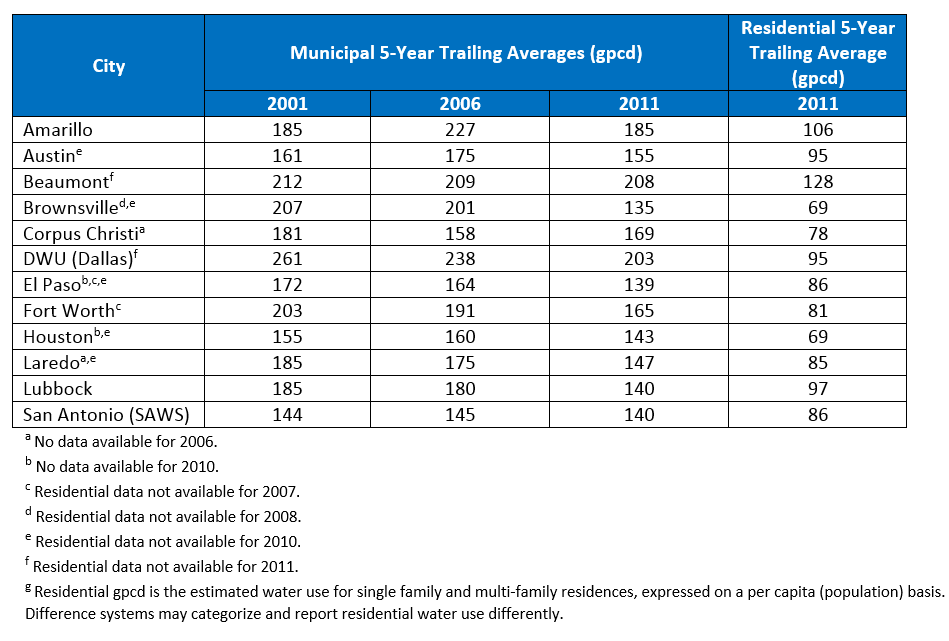From the 2016 Region C Water Plan, Water Conservation and Reuse Recommendations:
Water usage data from the Texas Water Development Board (TWDB) was used to compare per capita water use for several cities in Texas. Beginning in 2007, TWDB published estimates of residential per capita use in addition to municipal per capita use. Twelve major cities in Texas were selected for a comparison of historical per capita municipal water use in various parts of the state: Amarillo, Austin, Beaumont, Brownsville, Corpus Christi, Dallas (DWU), El Paso, Fort Worth, Houston, Laredo, Lubbock, and San Antonio (SAWS). The five-year trailing average was selected to dampen annual changes in water use that occur due to external factors, such as variations in weather. Two cities had 2011 total per capita water use greater than 200 gallons per capita daily (gpcd): Dallas and Beaumont. Each of these cities showed a decrease in per capita water usage from 2001 to 2006 to 2011. Brownsville currently has the lowest municipal per capita water use (138 gpcd) based on 2011 five-year trailing averages.
It should be noted that gpcd comparisons can be misleading when comparing between cities. With this consideration, a general trend of reduced per capita demand can still be seen in cities throughout different regions in Texas. The residential per capita water use estimates better represent population-dependent demands. Based on the period from 2007 to 2011, residential water demands for the cities in this data set range from a low of 46 percent of municipal demand (Corpus Christi) to a high of 69 percent (Lubbock), with an average of 53 percent. Residential per capita water use ranges from 69 gpcd (Brownsville and Houston) to 128 gpcd (Beaumont). Of the 12 cities, the two Region C cities, Fort Worth and Dallas, have the fourth- and eighth-lowest 2007-2011 average residential per capita water use, respectively.

For more information, see the 2016 Region C Water Plan.

